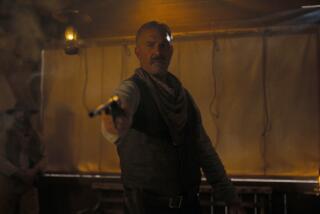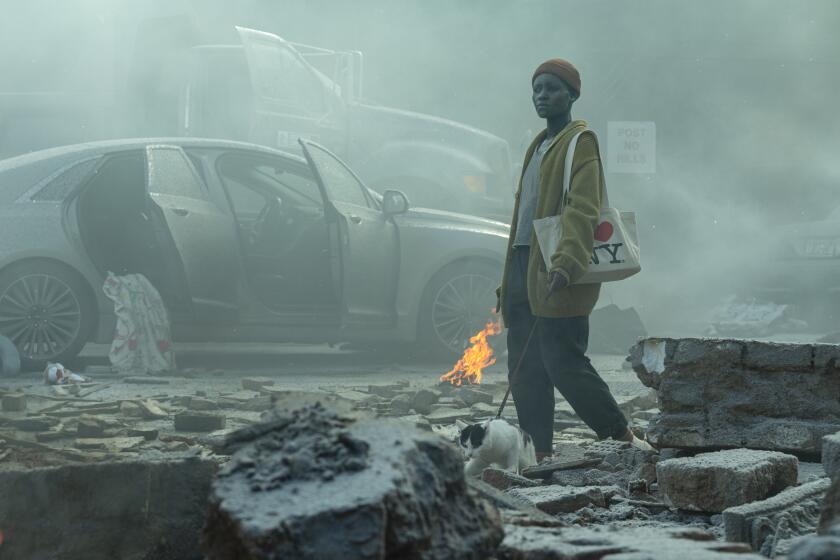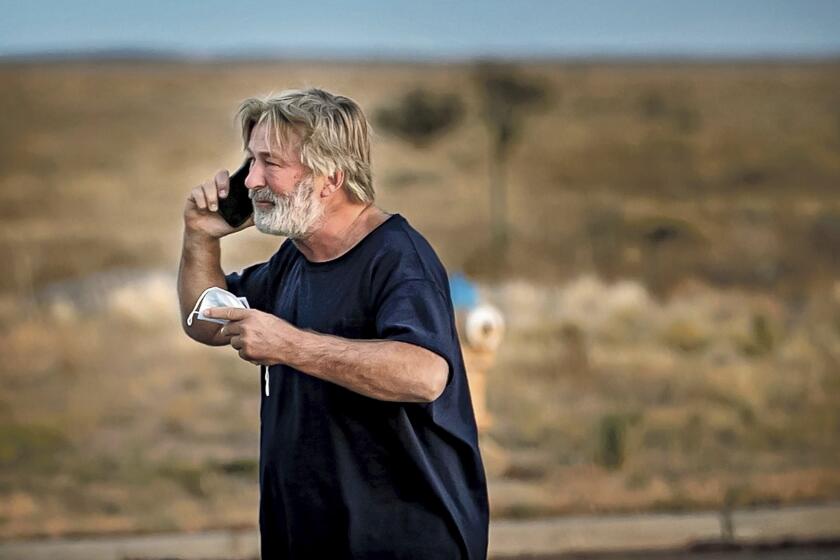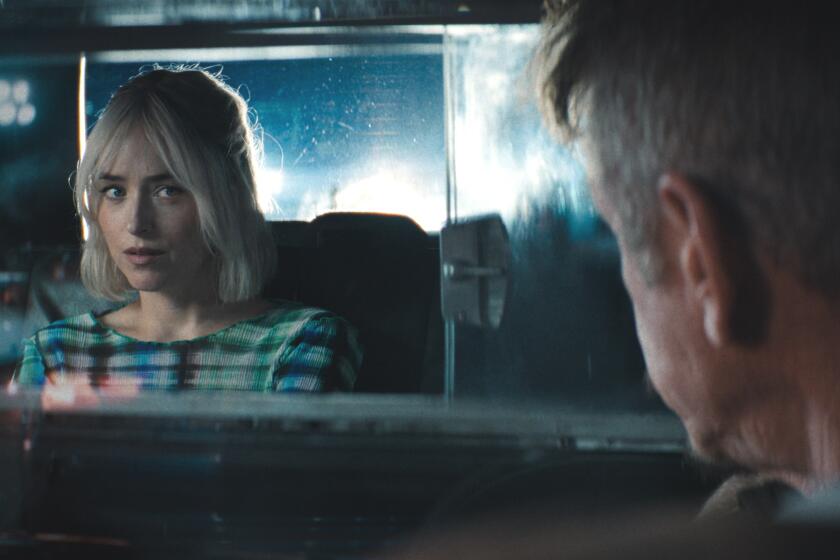Fading to credits
Irwin Young, deep in his 70s, is a generally upbeat man. But as the elevator doors open onto the eighth floor of DuArt Film and Video, the company his father started in 1922, his whole demeanor changes. “This is the sadness,” he says, as we enter the eerie silence.
Not a being in sight, it looks as if the employees fled during a fire and never returned. “This is where our film lab was,” continues Young, DuArt’s chairman. “That was the reception, there was the shipping area. They’ve moved to the digital department, such as it is. Boy, it used to be busy here.”
This is a story about a good-hearted dinosaur -- a tale that’s indicative of how the movie business is changing. It’s about a company that started as a friend to the big studios and may end as one of the last great friends the independent film community ever had. DuArt, a legendary facility in Midtown Manhattan, has always rebounded from hard times, but this time it may take a miracle as the movie business shifts from film to digital, leaving DuArt -- a company that has long specialized in film postproduction -- struggling to survive.
DuArt serves many purposes. It’s an East Coast facility for filmmakers who need a place to make prints from negatives, transfer film to video (and vice versa) and screen dailies, or who need equipment for online editing of commercials and programs.
DuArt Film and Video has had many incarnations over the years. In the late ‘20s, Al Young (Irwin’s father) built one of the earliest continuous 35-millimeter processing machines. In 1950, DuArt processed the first film in Eastmancolor negative, which became the mainstay of the motion picture industry. Later, the company formed a key relationship with a television news operation, CBS, when it became the first to use particular processing machines that could develop and dry film quickly. In 1977, the company won a technical Academy Award for creating the frame-count cuing system, basically a better way for filmmakers to count film frames.
For many years, major studios used DuArt to process and develop its film: Universal’s Newsreels were a lifeline in the ‘30s until Universal suddenly broke its contract to go to another lab in Fort Lee, N.J. Columbia Pictures also kept it going for years. “When I came into the company in 1950,” recalls Young, “Columbia was 60% of our business. Then we lost that contract.”
Next, CBS gave the company several years of life, but TV news soon discovered video, and the nature of that beast changed. But DuArt rebounded with innovations in the world of 16-millimeter film, the format favored by independent and documentary filmmakers. Suddenly a solid marriage was made: a perfect blend of the artistic, political and technical.
“I was attracted to independent filmmakers because of their spirit and because we suddenly had a lot of customers,” Young says. “I come from a very political family, so I responded to a lot of their messages. We needed each other.”
An indie champion
Over the last 40-some years, many of the top independent filmmakers working in New York -- including Spike Lee, Woody Allen, Susan Seidelman, Barbara Kopple and John Sayles -- have done their postproduction work at DuArt. (Check out many of their closing film credits and you will likely see a special appreciation for Irwin Young.) Much like European proprietors who once gave free room and board to Picasso and others in exchange for original artworks, Young was known for his oral or handshake deals, and his willingness to allow filmmakers to follow their dreams, even if it meant deferring their payments.
The care and feeding of the eventual print -- be it film or digital in origin -- is not unlike how parents feel about turning their child over to a caretaker. And by all accounts, DuArt has done it as well as anyone. “It’s not a by-the-numbers thing,” says documentary filmmaker Ric Burns, who, like his brother Ken, has used DuArt for 25 years. “It takes judgment, craft and experience. We put a tremendous amount of hope, time, worry and money into our work, and Irwin Young and company have given back just as much care and skill.”
“Basically, Irwin Young is the mensch of the independent film world,” says filmmaker Aviva Kempner (“The Life and Times of Hank Greenberg”). “He does not see working with us only as a business but also a joint artistic vision. He commiserates and networks with us when we are in that weary, will-it-ever-get-done stage.”
It took Kempner 13 years to raise the funds to complete “Greenberg,” but, she says, “Irwin always believed I would finish and allowed me to pay off my bills as the funds came through.”
Now times are changing again. Many indie filmmakers have either started making movies for the majors or are part of companies that have been swallowed up by them -- for example, Fox Searchlight at Fox, Sony Classics at Sony, Focus at Universal; even Woody Allen’s films have been released by DreamWorks of late. The studios’ preferred laboratories, such as Deluxe and Technicolor, have facilities in Los Angeles, as well as overseas and in Canada, where labor is much cheaper.
The dawn of digital
But all this pales when compared with the seismic shift in the last few years from film to digital video, most notably the indie end of the business, which is attracted to the less expensive, more portable process. DuArt does have a digital department, but only a few people work there. “There just isn’t enough volume,” Young laments. “I should have realized two years ago that digital was going to affect us more, though I’m not sure what I would have done.”
Even he concedes this time it feels different. “Sixteen-millimeter is almost disappearing, and that was a big part of our business. We once had about 230 employees, and now we’re at about 90.”
To be sure, some filmmakers still prefer to use film, even though it’s considered something of an indulgence. “For all digital’s so-called sophistication, it in no way resembles the luminous quality of film,” says Burns. “I promise something is lost in translation.”
Still, there’s no turning away from the future. Indeed, the most active of those remaining at DuArt are the young, and they are young digitalistes. People like Chris Healer, 25, who admits that when he went to film school, this isn’t what he envisioned. “I wanted to travel the world and make 16-millimeter films. I didn’t plan on sitting in a small studio doing this.”
“This” means using computers to manipulate what has been shot -- adding, subtracting, enhancing, erasing. A blue background, on this day, for example, becomes a bustling city as footage is added. Wires are removed on “dust” busting machines. Healer understands the new realities and is much in demand because of his winning combination of computer programming skills and film sense.
“It’s an issue of being cost-effective,” he says. “You can either hire 20 more people on set for two weeks to try to get you crazy shots, or you can hire five or six of us for a week to give you something more visually fantastic. Let’s say you’d have to go out of your way not to learn digital now in the world of film.”
Which means that film labs such as DuArt may become a thing of the past.
“I do feel like I’m becoming obsolete. I am not sleeping at night,” says Young, who cringes at the thought of closing shop. “I have a lot of good people still here, and there’s so much history in this place.”
If DuArt does close down, those last-standing pure independent filmmakers will have lost more than a place to develop their pictures.
“Irwin’s a hero,” says Burns, who adds, “People will be stunned and staggered if he goes out of business. He’s a successful businessman and he’s made innumerable contributions, both directly and indirectly, to the film industry.”
Says Kempner: “He’s part shrink, part film guru, and there aren’t many of those left in any aspect of this business.”
More to Read
Only good movies
Get the Indie Focus newsletter, Mark Olsen's weekly guide to the world of cinema.
You may occasionally receive promotional content from the Los Angeles Times.






